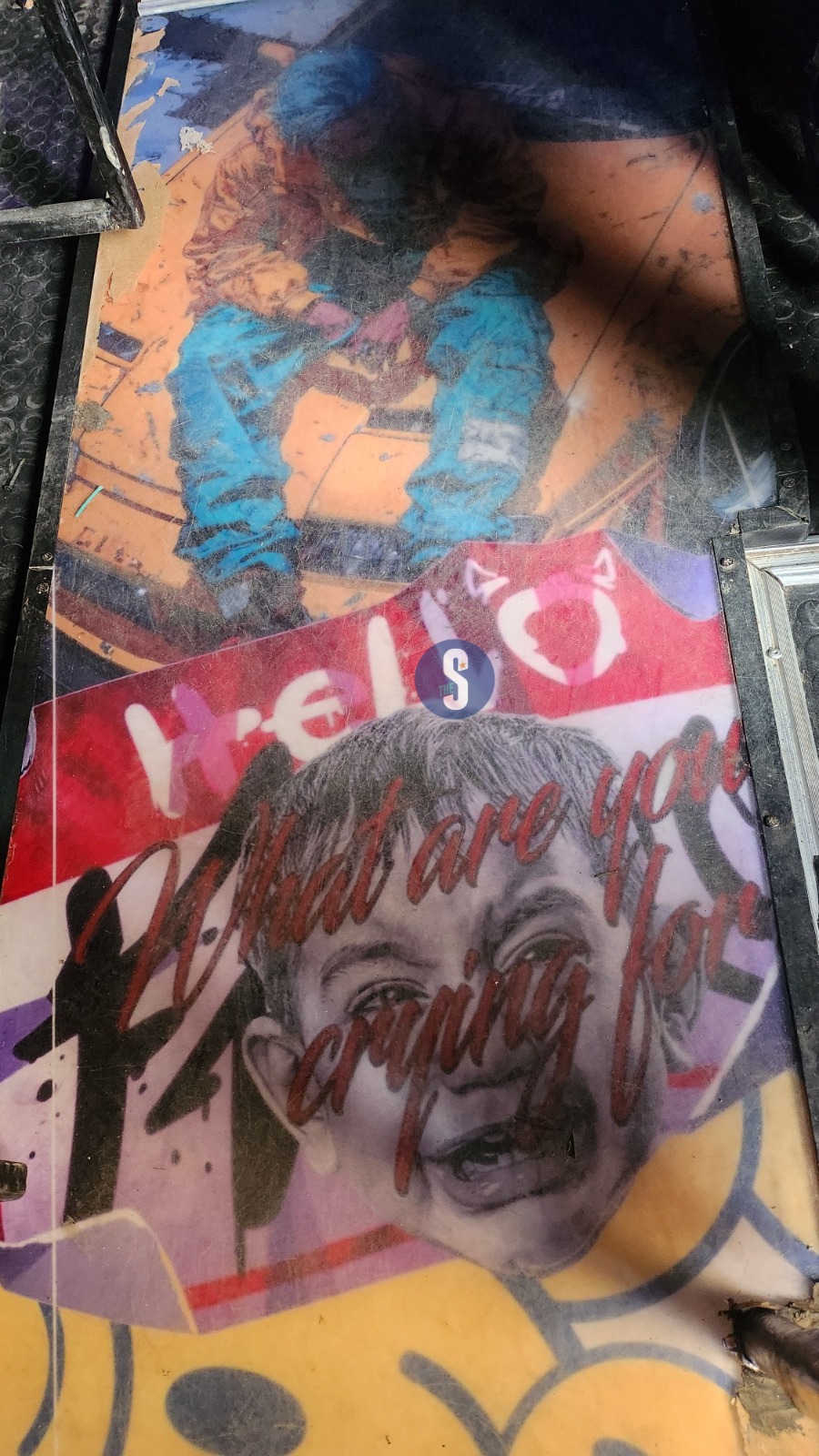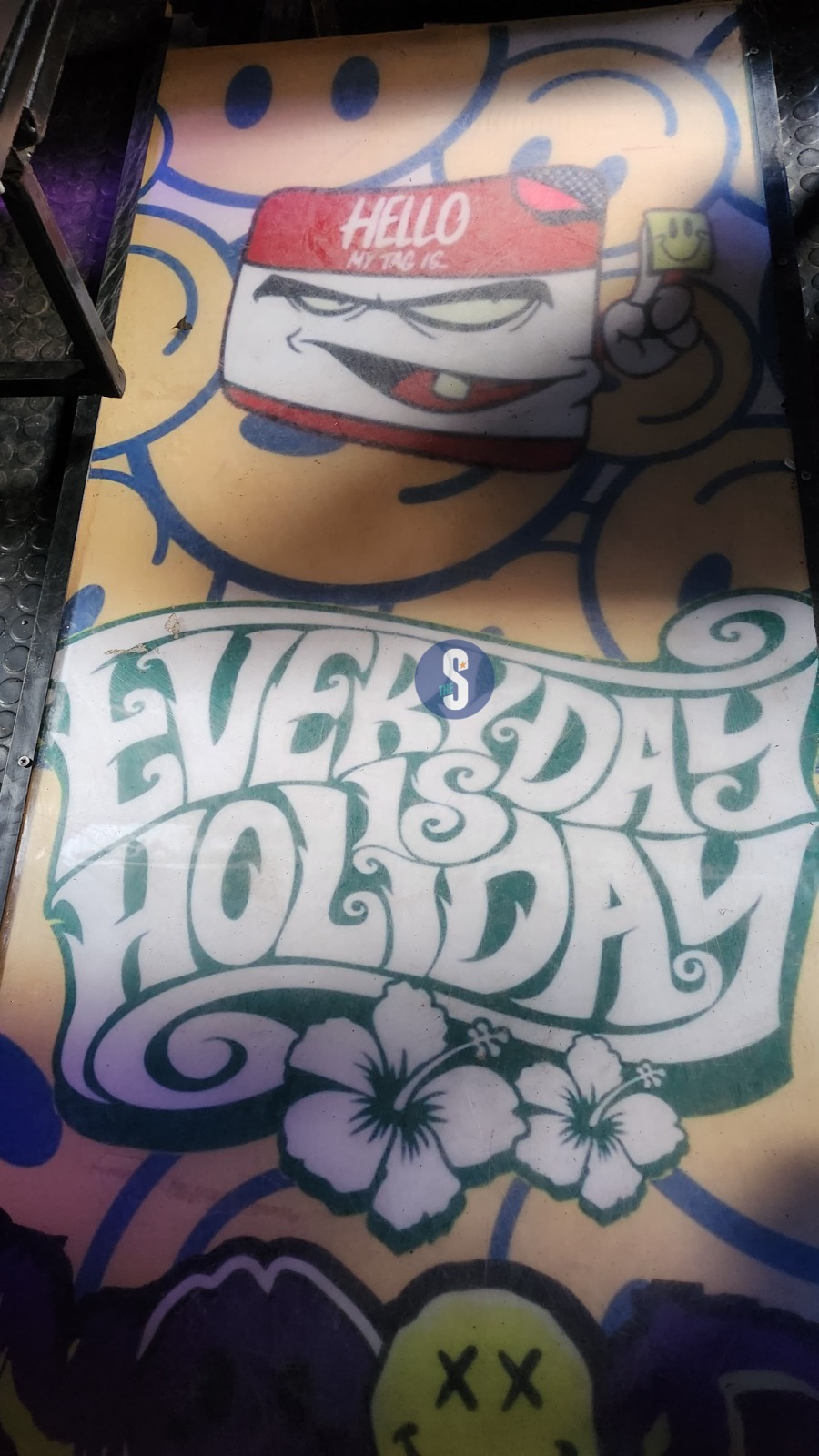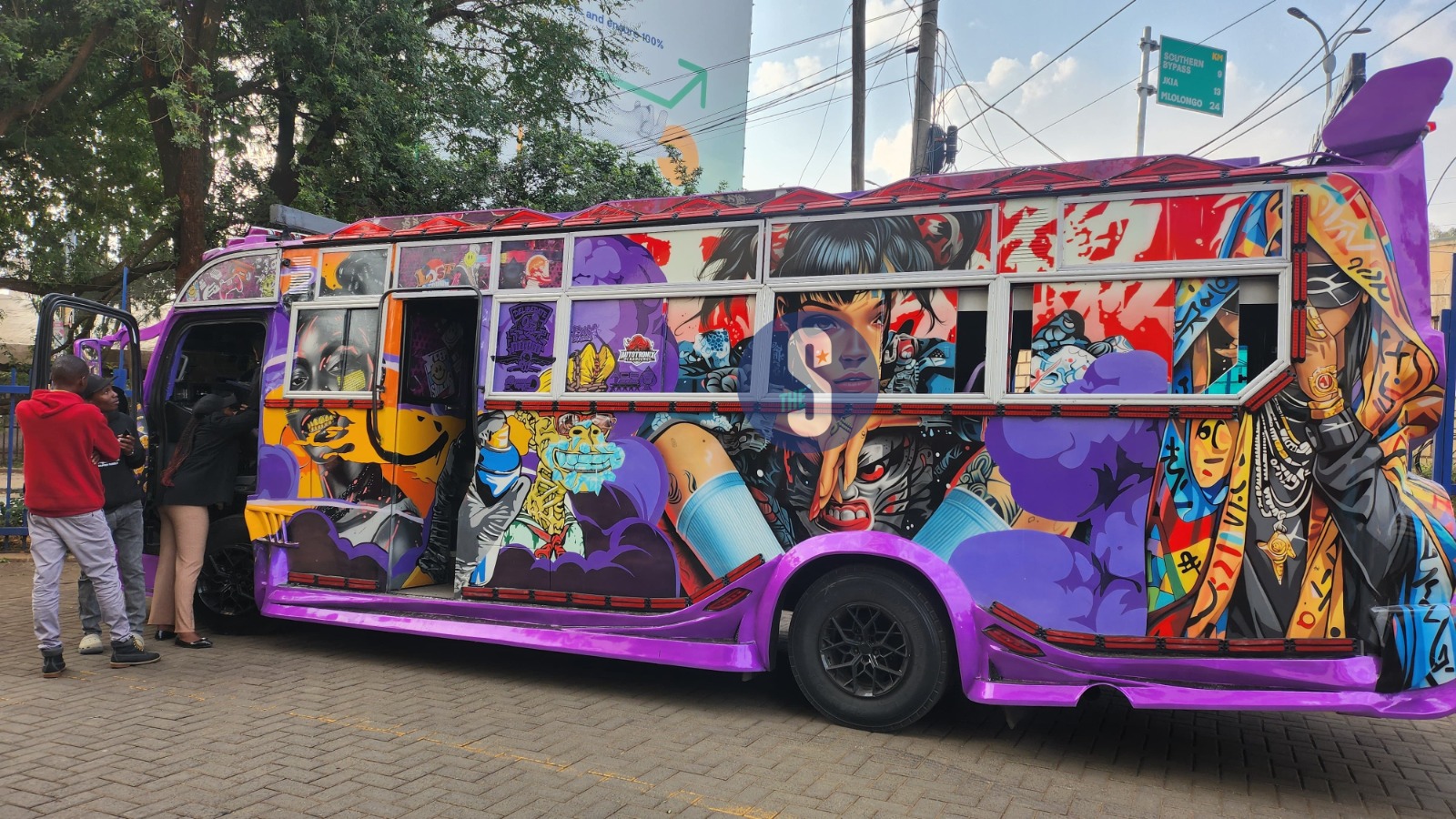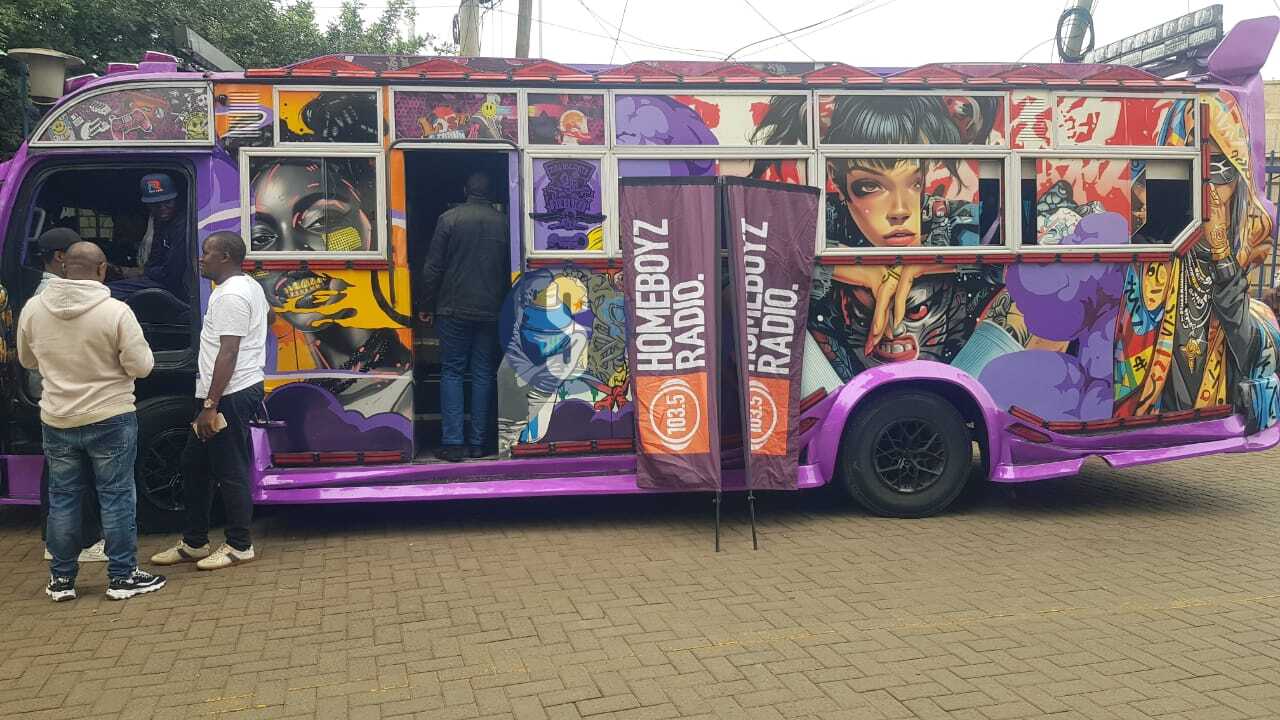
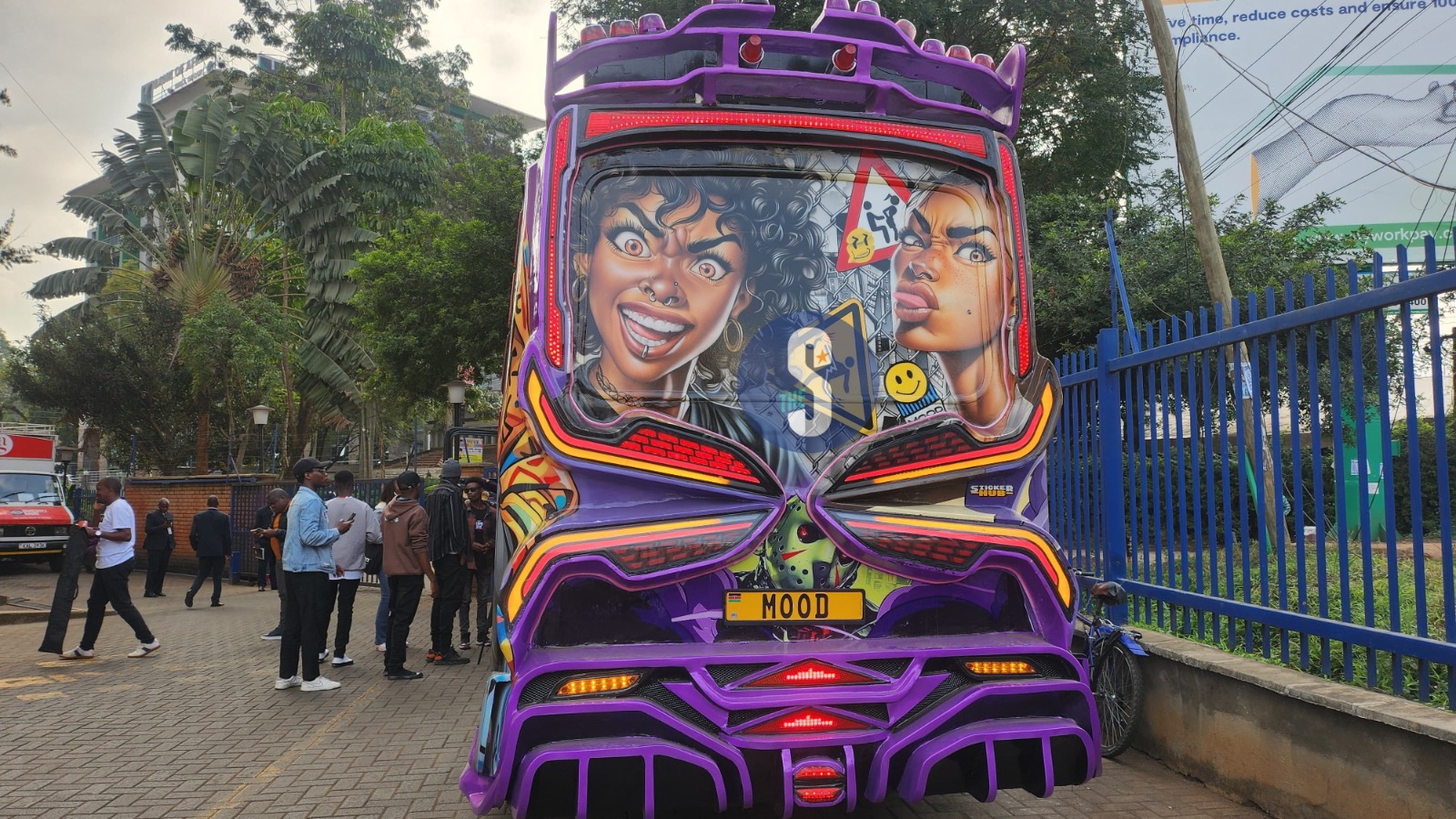
Nairobi's transport scene has welcomed a new sensation, Mood, the matatu capturing Gen Z’s attention with its glowing LED lights, striking graffiti, and loud speakers blasting amapiano, drill, and Gengetone hits.
Mood is more than just a means of transport, it's a full-blown experience and according to one of the touts, the name "Mood" was inspired by its unique vibe, from the vibrant graffiti and cozy interior to the sleek, custom-designed bucket seats.
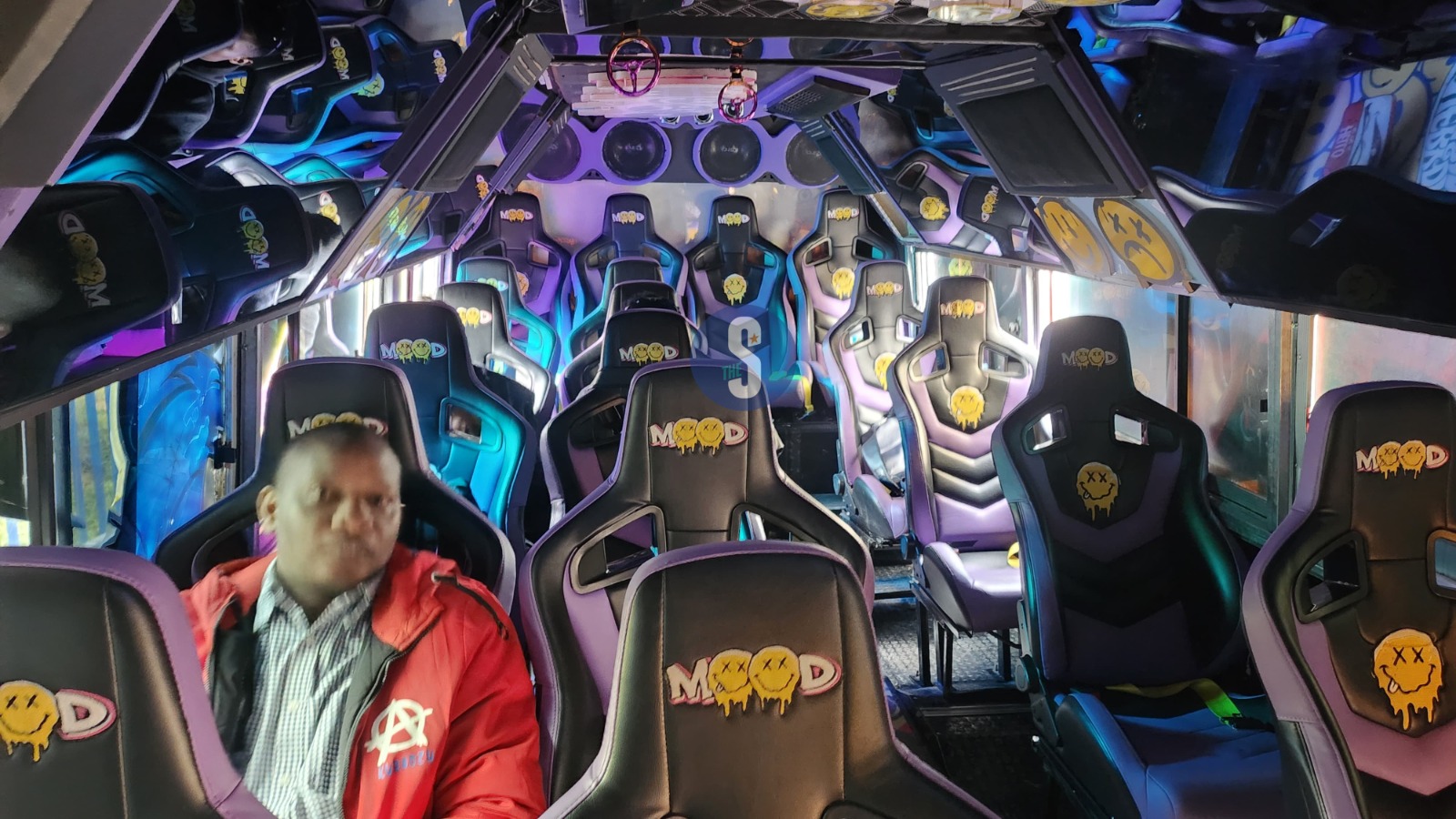
Nairobi’s matatu culture has long been a symbol of creativity and street identity.
But in 2025, a new sensation has taken this tradition to another level.
Enter Mood, the matatu that’s turning heads, drawing crowds, and redefining public transport for Gen Z.
With its glowing LED lights, bold graffiti murals, and booming speakers blasting amapiano, Gengetone, and drill, Mood isn’t just about getting from point A to B, it’s an immersive experience on wheels.
“The car itself is pleasing and full of vibe,” says Geoffrey, one of the touts.
“It came together with Money Fest, and it has been there, we were just waiting for the right time to reveal it to the public.”
They're built to appeal to young commuters who want fun, energy, and social moments on the move.
In essence, Mood and Manifest are part of the same movement—turning matatus into cultural icons.
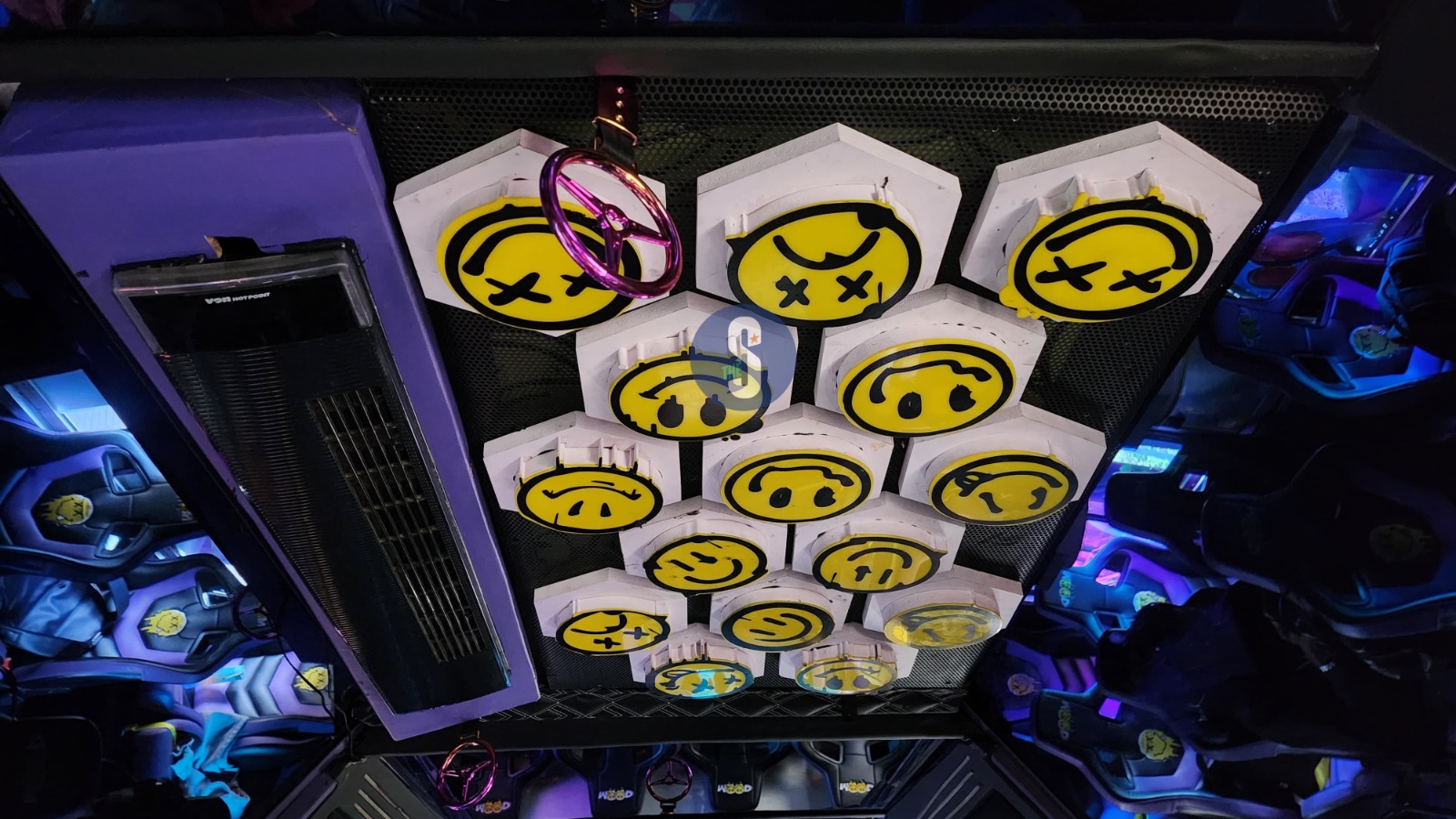
Indeed, Mood is part of a new generation of matatus like Manifest that prioritize style, entertainment, and community over traditional commuting.
Built with young, urban passengers in mind, especially students and early-career workers, these matatus have become rolling cultural hubs, combining music, art, tech, and youth identity.
Inside Mood, everything from the custom bucket seats to the mood lighting is carefully curated to appeal to a youthful, energetic audience.
The matatu even includes a built-in DJ desk, a feature that transforms ordinary rides into party-like experiences with live mixes.
“The fare you pay in Mood isn’t just for the ride,” says Lenny, another conductor.
“It’s for the vibe, the comfort, and
the unforgettable experience along the way.”
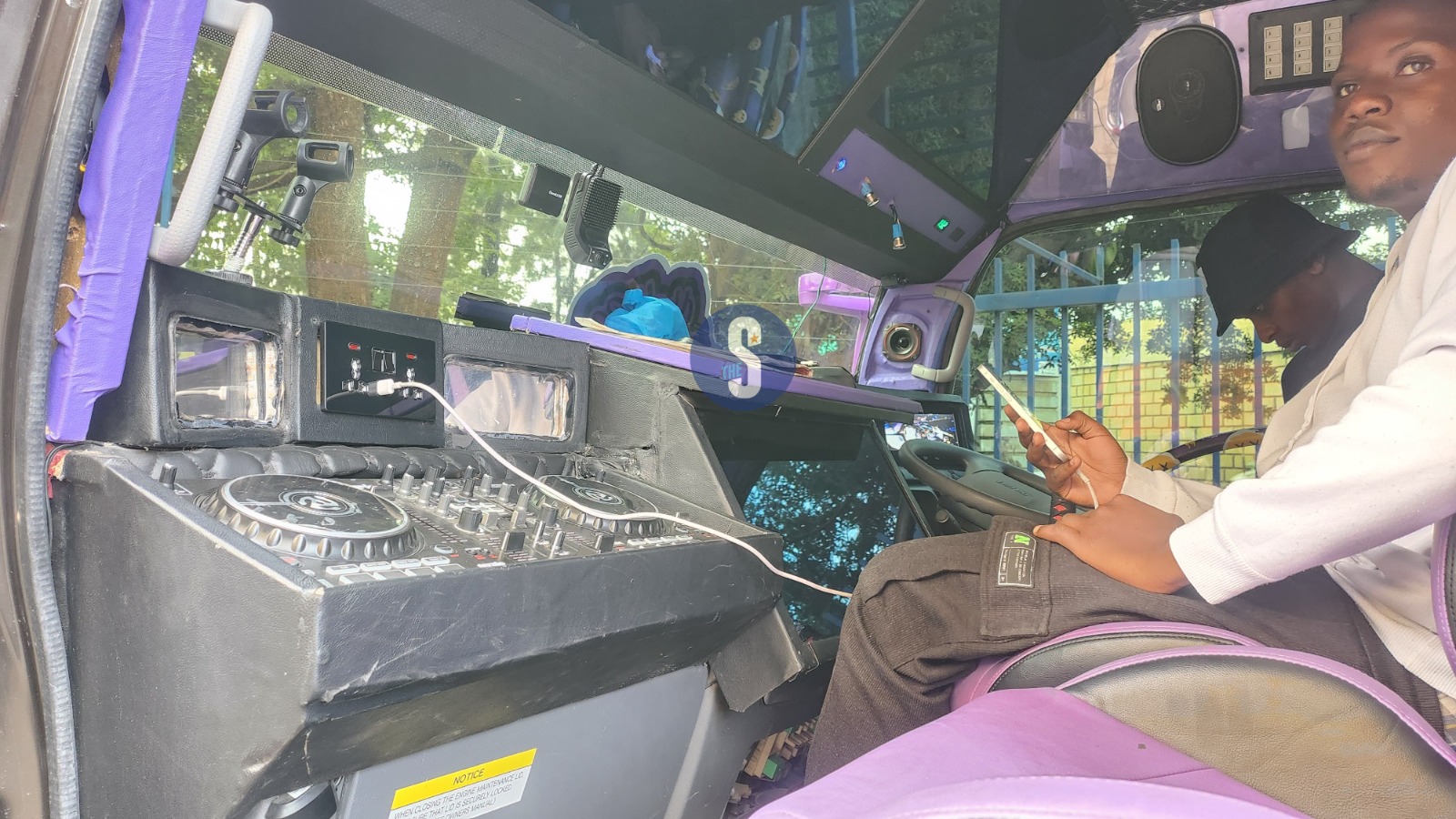
Operating mainly on the Embakasi route, one of Nairobi’s most populated areas, Mood taps into a high-density commuter market filled with young people.
With its strategic route that links
to key hotspots around the city, the matatu remains highly visible and relevant.
Its fare, typically around Sh150, is
above average, but passengers don’t seem to mind. For many, it’s not just a
commute, it’s a social moment, a statement, even a status symbol.
The launch of Mood on July
19, 2025, at the Kenyatta International Convention Centre (KICC) was a public
spectacle that brought parts of the city to a standstill.
Crowds gathered, phones were raised,
and in the frenzy, some fans even climbed the matatu, causing minor damage to
windows and solar panels.
“The vehicle got damaged a bit
during its launching since there were people climbing on the top,” explains
Lenny.
“However, we’ve been able to handle
the matter and since Sunday we’ve been fixing the damaged parts.”
Despite the mishap, the launch
cemented Mood’s reputation as more than just a matatu. It represents
freedom, youth identity, and a space for self-expression.
Whether it’s the curated playlists,
the striking visuals, or the electrifying interior, everything about Mood
reflects the culture, energy, and voices of Nairobi’s Gen Z.
The matatu is more than transport,
it’s a moving platform for connection, music, and visibility.
For many young Nairobians, riding Mood
is about showing up and being seen. It’s about fun, friendships, and being part
of something vibrant and new.
In a city where matatus are already
known for flair, Mood has raised the bar, becoming not just a means of
travel but a lifestyle.
As Geoffrey puts it, “It’s not just
about the road, it’s about the ride, the mood, and the people.”
